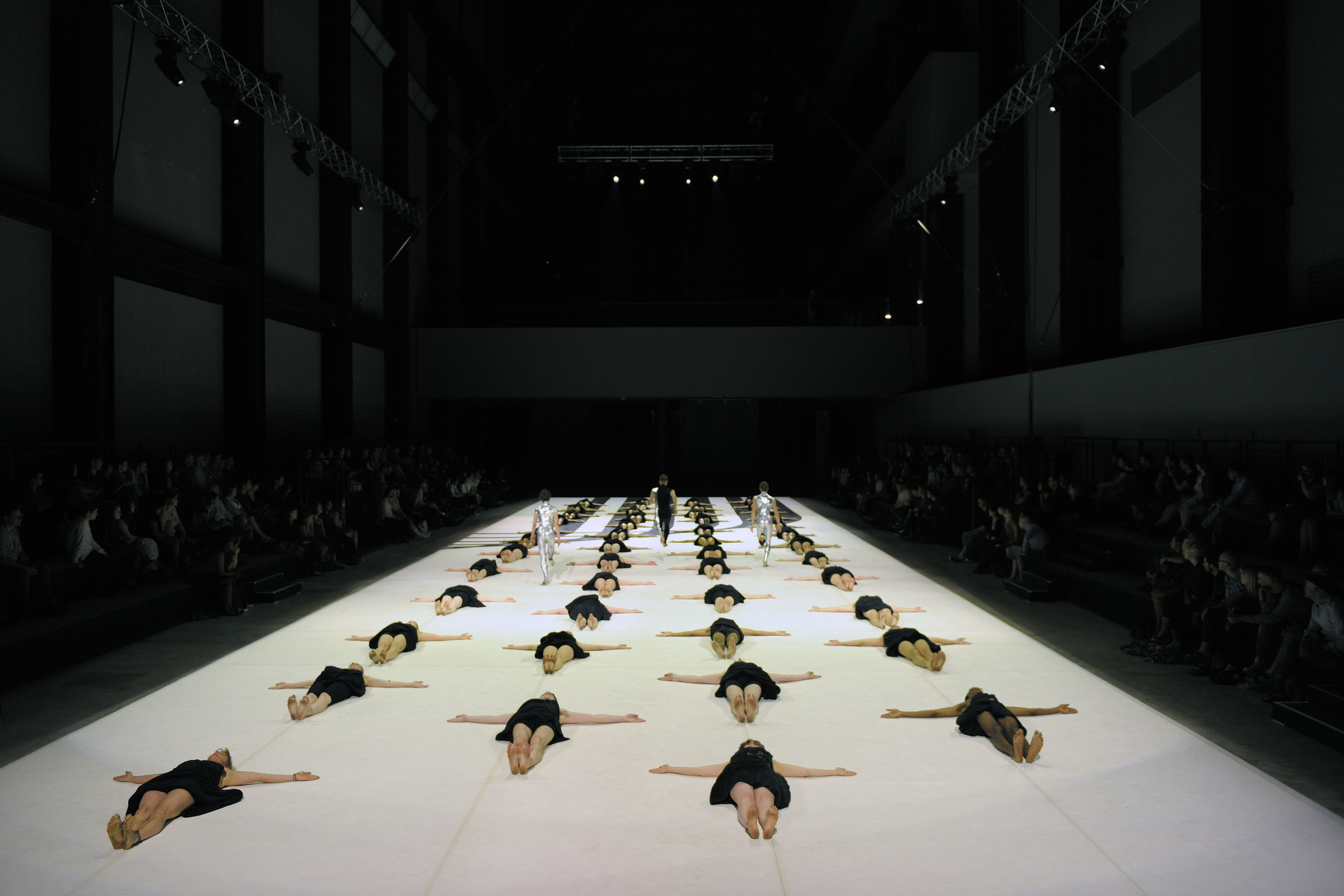MOVEMENT STUDY: MICHAEL CLARK AND ANTI-BALLET
MICHAEL CLARK & LEIGH BOWERY
Two years ago I was in pain to the point that I couldn't get out of bed. After numerous tests, I learned that the cause was due to an irreversible nerve issue in my brain. While searching for a remedy, I read that neuroscientists say with my condition, the brain responds well to movement, as long as the motions are not associated with pain or treatment for the pain. This made me realize that I could do ballet as therapy. I had danced for 17 years during childhood, but stopped in my 20s because I thought everyone was too square.
Since rekindling my interest in ballet, I've discovered choreographer, Michael Clark on the recommendation of a friend. Michael Clark's work is often referred to as "anti-ballet" or "post-punk ballet," which sounds like the best form of ballet I could think of.
In the 1980s Clark formed his own dance company after a brief stint with Ballet Rambert following his studies with the Royal Ballet School in London. Clark had danced since he was four years old, beginning with traditional Scottish dance in the town where he grew up. In the early days, his company performed with post-punk groups, The Fall (my fav), Wire, and Leibach. Their wardrobe was made by another of my favorites, Leigh Bowery, as well as designers Bodymap and Trojan, who later became known for their 'club kid' fashion in London and New York.
Among these, I find his work with The Fall and Leigh Bowery the most influential. In 1983, filmmaker Charles Atlas made a faux cinema verite film about Clark called Hail the New Puritan, in which some of Clark's best work was captured (in my opinion). The film is titled after The Fall's song "The New Puritan," and includes three dances to music by The Fall, with company members clad in Leigh Bowery costumes.
I think I love this work so much, in part because of the dances themselves, but also because of the conceptual art surrounding the movements. Clark remarks on this work in an interview saying, "It was easy provocation with costumes or props--like the middle finger, or costumes with bare asses, or dildos on stage. It was often about extraneous things, not necessarily about the dance. But back then these gestures were important, because ballet is so rigid." Beyond bringing a flexed foot to ballet, Clark's 'extraneous things' provoked timely statements regarding gender, 'normative behavior,' corporate advertising, and sexuality that went beyond a 'fuck you' to classical ballet.
Clark continued in this vein through the 90s, until he hit a wall and took a break for three years. (Leading up to this he had become a heroin addict, sort of on accident, as he had wanted to do a solo piece for The Velvet Underground's, Heroin, and thought it "disingenuous" to not do heroin during this process).
I find relief in knowing that someone so prolific had to stop to take a break, even if it was to kick heroin. That makes Michael Clark more human to me. People like to posture as if they're only their work, especially in creative industries, and I know from experience how difficult it is to put one's ambitions aside in order to take care of yourself. In this type of work, your creations consume you, and so to put this on hold, even for a good cause, is something like death.
In 2001, he resumed his work in choreography, returning with homages to Stravinsky, The Velvet Underground, Lou Reed, The Stooges, and David Bowie.
Clark's last production came in 2013, and so I'm not sure what else he's working on, but I can't wait. I'm surprised that with how well-received his work is, he is not better known. Much of his productions are difficult to find on the internet, despite the media coverage he gets afterwards. However, there is a contemporary documentary on him that I highly recommend, as well as dozens of reviews on his various performances.
I think the best thing about being a designer, for me, is that I get to continuously study, and find out about new things as part of my process. Learning of someone whose work combines fashion, ballet, post punk, conceptual art, and performance art makes me giddy--the way I felt when I discovered these subjects independently of one another in my youth. Plus this growing knowledge of my creative predecessors will undoubtedly influence my work, which is what designing, to me, is all about.
Courtney Bagtazo, © Bagtazo, 2015













